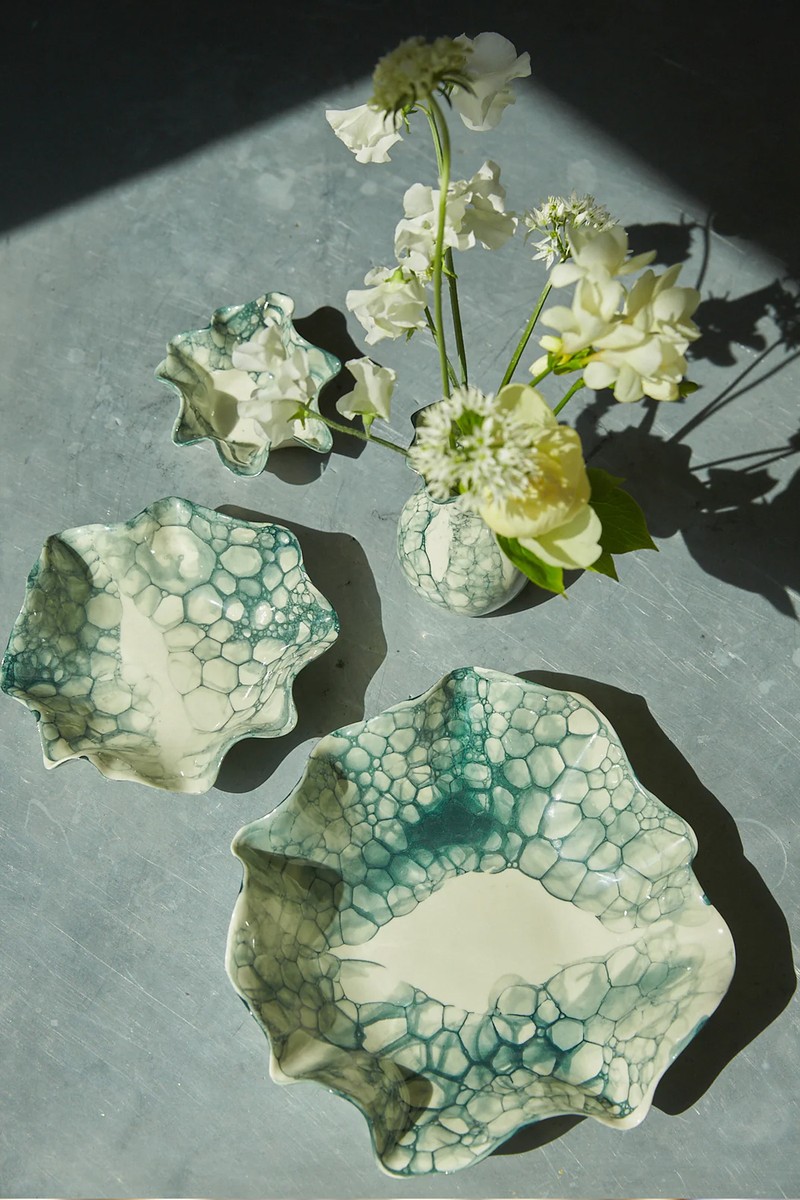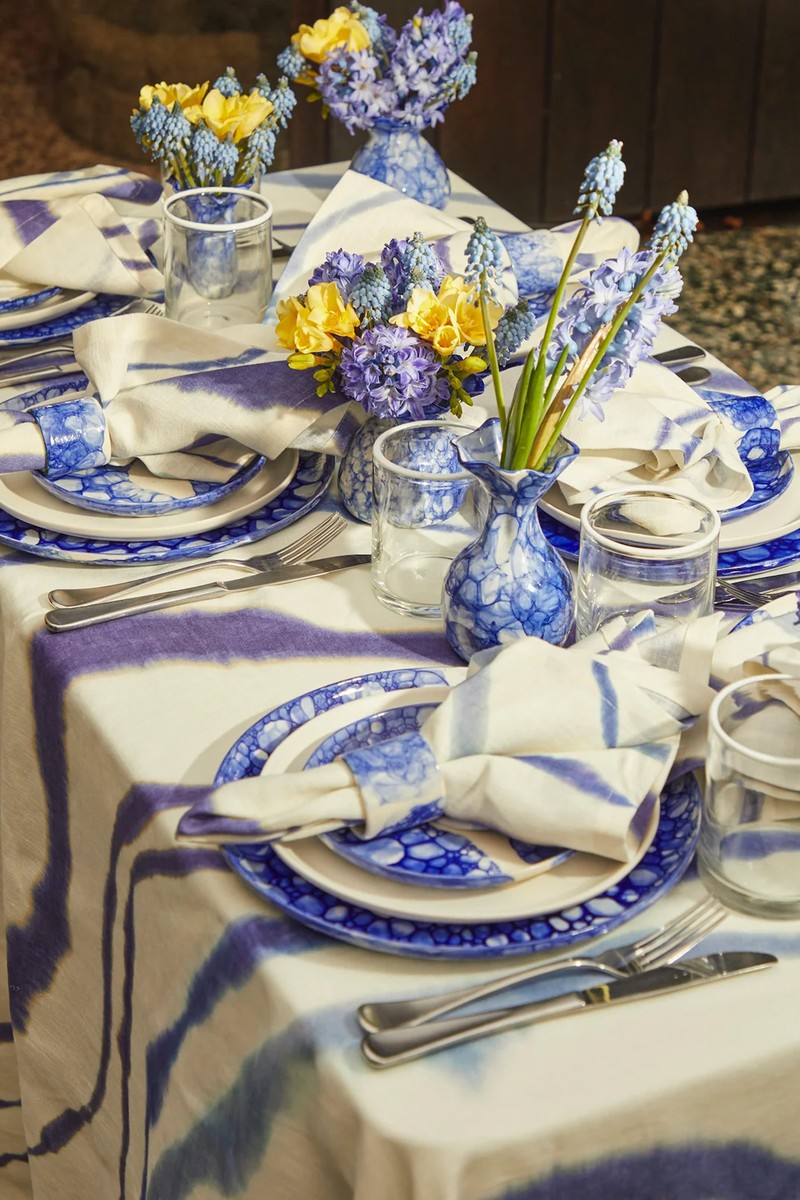
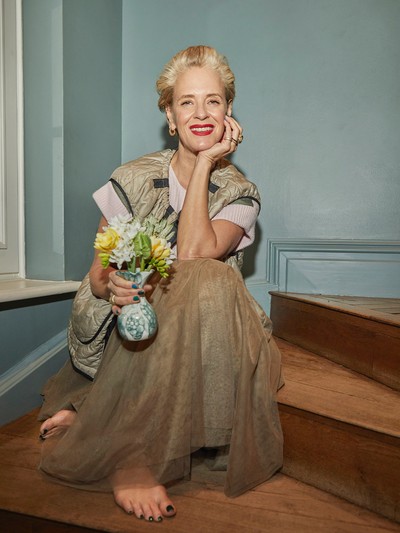
The Gold Edition Meets… Deborah Brett
I was born in London but grew up between there and Switzerland until I was seven. Half of my family were quite business orientated but I had an uncle who was an artist. Overall, though, we were a family that appreciated music, culture and art, so I can’t really tell you how or where my creative spirit came from – it just happened. I was lucky in that I knew what drove me from a young age, which was just the idea of being creative in any way that I could, whether that was dressing up, painting or making things from papier mâché. I was always expressing myself through my hands – that was my thing.
It was fortunate that I had really supportive art teachers at school. I basically lived in the art room and I don’t think my family particularly understood it, they just tolerated it. I had to find my own way, especially if I wanted this to be some sort of career path. It was quite bold of me to go to art college (I ended up going to Central Saint Martins to study fashion design) but I just had this real conviction. My father wanted me to study law and German at Bristol, but I knew I didn’t want to – even if it meant he didn’t speak to me for six months. I just felt very strongly that I needed to do something for me.
It was a really interesting time to be at Central Saint Martins. My contemporaries are all really well known now. But it still wasn't a very trodden path. There weren't any famous people that had come out of Saint Martins since John Galliano, so they were excited to find the next Galliano. People who were my contemporaries include Stella McCartney – she was in my year – Phoebe Philo who was the year below me and Katie Grand who was a couple of years above. (Alexander) McQueen was doing his MA and Matthew Williamson was a couple of years above me too. Suddenly it was Cool Britannia, where you had all these young designers coming out of college and launching their labels. It was a really exciting time.
However, I realised I was not going to be supported at Saint Martins as a designer. It was a time for avant garde, not true ready to wear. They wanted ground-breaking and I knew that wasn’t me, so I switched halfway through to journalism and that’s when I discovered magazines. Again, I grew up in a family that didn't buy magazines, so I didn't even know what a stylist was until I got to Saint Martins. Suddenly I realised I could still be creative but in a different way, not just with making the clothing, but actually in representing it.
I graduated with a degree in fashion communication and promotion. It was journalism, photography, marketing, styling – all these visual arts, but based more on print. By this time, I also had a lot of work experience under my belt. I’d worked at Elle in New York, in Joseph’s press office in Paris and I'd done all my own fashion shoots. Luckily, I ended up walking into a job at The Times as a fashion assistant to a wonderful woman called Grace Bradbury. Within six months I'd been made deputy fashion editor because it was just me and her. I ended up styling all the shoots and contributing to the fashion pages from the get-go.
It was an amazing learning curve. Rather than going to Vogue where you might be one of 20 people starting at the bottom, I was one of two and able to do so many things. I feel very privileged to have worked in newspapers and magazines at a time when you were the touch point for women to understand what was happening in fashion. Your opinion really mattered. Because there was no social media, women would tear out the pages. I could understand what my input was doing within the industry and it was exciting. I remember getting my own copy of Vogue and other magazines and the excitement of turning the pages and seeing what was new. Back then, magazines and newspapers were the only place you could get that information. Now, I get the magazine and am I that interested in opening it up? Maybe for an interview but that immediacy has been taken away because people get their information from so many other sources.
I worked in magazines for 25 years and loved it. But after I had my second daughter, Instagram started bubbling up and I realised it was another avenue to express myself. It was those initial stages where it was just chronological feeds of beautiful imagery – that tapped into my fashion shoots background, which was all about creating moments to transport you into a fantasy. When I started my own Instagram account, I didn't know I was building this community who were following the things I thought were beautiful, in the same way that they might have followed the magazines. I was starting to talk to a community in a very personal way about motherhood and children, being creative and still being stylish. The women who followed me maybe couldn’t find that direct connection within a magazine – and rightly so, because it was really personal. Unbeknown to me, I offered that safe space for that conversation on Instagram.
What's interesting about Instagram is it's very much a two-way street. It's not just telling people what to do, it's interacting with a community. I myself have started to feel disconnected from magazines – it’s the whole £3,000 dresses on a 17-year-old model thing. As beautiful as that image is, it doesn't inspire me anymore. By contrast, Instagram has allowed me to start expressing how to wear clothes with the designers I want to wear and what kind of skincare and make-up I want to use. Then, I think other women looked at me and thought, “Oh I’m close to that age, and I want to emulate that.”
My personal style is best described as timeless but with a modern twist. It's about still retaining a joy for fashion at any age – that’s really important to me. Fashion, for me, has always been about fantasy and how to take that fantasy and bring it into your life. Fashion can change your perspective on who you are and how you feel about yourself. I so believe in the positivity of fashion – and of inclusivity.
To someone looking to refresh their look, I’d say start with hair and make-up. It’s an iconic way to define yourself and people can often get stuck in a rut with that. It's important to re-evaluate your life and what you need. Then, look at those women who inspire you – what is it about their look that inspires you? Is it their hair? Is it the colour? Is it the cut? Is it the type of make-up? Then think, what do I need? What is the thing that's going to freshen up my look? It doesn’t have to be very expensive and there’s room for trial and error. The thing I love about make-up is you can put it on and then wipe it off if it doesn't work for you.
There are so many fashion brands I love. One of the things I love about Wyse is that it's very easy to incorporate into your everyday life and wardrobe. The collections are wearable, but there’s always a joyfulness to it and something a little bit quirky or different. What I love about fashion is that idea of mixing and matching. ME+EM is also fantastic – especially for work – as is Wiggy Kit, the prints are so original, and the quality is high. I’m also a big fan of designer-high-street collaborations. For example, Roksanda did a beautiful collaboration with Jigsaw recently, which was great. It was a lovely way to get into a designer who’s usually quite out there but toned down by Jigsaw. The price is also lower, but the quality is still there.
The beauty industry has definitely become more age positive. You now have these brands that focus on combining skincare with colour, like ILIA, for example, which I'm a huge fan of. I don't want to be 20 or pretend I’m 20 – I want to look like the best version of myself now.
Motherhood is such a shift in everyone's life, and it does make you re-evaluate what's important to you. I took a bit more of a backseat in my career at that time, but I was lucky enough to still be able to work in fashion and be a full-time mother. I could pick and choose the jobs I wanted to do – the challenge came in keeping myself excited and engaged in what I was doing. That started to wane. That, combined with the shift in magazines, suddenly made leaving my children for shoots not very worth it. I also felt I needed a new challenge. So, once I'd had my third child, I decided that was the time to discover something new. I gave myself a year of discovery – a year where I would set aside a day or two in my week to look at different fields and try out different things.
I enrolled in lots of different courses. I started doing some printmaking because I was always really obsessed with it at school. I got into baking and I did flower arranging – anything creative. One of the courses was pottery and I absolutely loved it. But I didn't understand how you could study it and then do it as a career. It was just a craft – it wasn't viewed in any high regard. But when I started doing it, I loved it so much. So, then I did another pottery course, and then another one. It filled me with that same joy I had when I was younger.
Around the same time, ceramics started coming more to the fore. You'd go to Frieze Art Fair and suddenly there were ceramicists being shown among the contemporary artists. People were viewing it in a different way. Then, my pottery tutor at college asked if I wanted to do a degree. I remember quite viscerally being taken aback and my instinct made me say no. I had children and a job, and I didn’t think I could go back to school. But then she told me it was two days a week for a year – and before I knew it, she was signing me up for it. So, I completed this Level 3 BTEC at Chelsea Art College and I have to say it was the best year of my life. I hadn't realised how rewarding it was to throw yourself into something that was really new and scary. Trying all these things and potentially failing at them – I found that really exciting.
My best piece of advice for anyone looking for a new chapter is figure out what you don't want to do. So, you might say, I want to be impassioned but what is it you want to feel impassioned by? In whittling away at what doesn't resonate with you, you're able to find the thing that does. I had a wonderful tutor during my college year who gave me the space to figure out the things that made me passionate about ceramics. While I was doing that course, I think I had an innate sense that this was going to be stuff people would want to buy. So, I refused to do it. Purposefully, I said I could do that, but I'm not going to. Instead, I wanted to push myself further creatively. I knew I could do the commercial thing, but I didn't want to be pigeonholed straight away.
When I graduated, I had a show for my sculptural work and then for my more commercial pieces. They just started selling and actually sold just off Instagram, which was amazing. I would upload 20 images of my wave bowls with the bubbles and they would sell out in half an hour. I admit it was really exhilarating – that idea of making things, people wanting them and having them end up in people's homes, being appreciated.
That caught the eye of the buyer at Thyme, a hotel in the Cotswolds. They got in touch and asked whether I’d consider doing a collaboration and I was excited about the idea. We got started and then suddenly went into lockdown, so I couldn’t work in my studio anymore; I had to do everything on the kitchen floor. I was very lucky that my husband had bought me a kiln for my birthday and Christmas present, so I was able to make these pieces and fire them in my home. Then, I would leave them on my doorstep at 5am and the girls from Thyme would pick them up, photograph them and upload them for sale on their website. I think it was actually very good timing – during lockdown everyone took more interest in their homes, and therefore homeware by association.
After four collaborations, I started thinking I could do this as a business. But I still wanted to push forward creatively, and not get bogged down in the everyday of making the same thing again and again. Often, people demand you stay in that niche, and I didn’t want wave bowls to be the only thing I did. I found a factory in Stoke-on-Trent to help me produce my work – it was so important for me to find a place in the UK that could do that – and produce prototypes so I could refine the collections each season. I make the prototypes in my studio and then the factory makes replicas of that original piece through a mould. Then, they slip cast, which means you use liquid clay and then pour it into the mould. So, every piece is an exact handmade replica of the original piece I made. I also taught three women in the studio there how to decorate my work with this special bubble technique that I’d developed. The bubbles are blown by mouth over the surface of each of my ceramics. So, although each piece is identical, everything is hand decorated and, therefore, unique.
People might look at what I did as an immediate pivot. But it was really a process that took ten years in total. I didn't just stop my career and jump into something new. Slowly, I had to let go of one part of my life and allow the new part to form. We're taught to fear the new, but you don't have to chuck it all away. I'm using so many of my skills from fashion in my new job – so it’s important not to close yourself off. The world is your oyster, but you could just start with a course – even a day course. It will give you structure without making you feel like you’ve abandoned everything you’ve done before.
Anyone’s life or career can develop in this non-linear way. It’s better to think of this stuff as a process. It’s like a web trickling out – you can go down multiple avenues at the same time. I feel really privileged to be the age I am in the time we're living because there are more women who have the energy and the courage to do something new later in life. The idea of starting a business seemed crazy and it still does fill me with fear. But it’s also exhilarating and makes me feel young and re-energised. It also gives me a new purpose, which is also something my children are seeing. The idea of them seeing their mother not quite knowing what she's doing and sometimes getting it wrong and having to deal with a bit of a drama gives them the confidence to know that they can go out in the world and try something a bit scary. But if it's a passion that they have, then I want them to know they should follow it.
Visit DBCeramic.co.uk and follow @DeborahBrett on Instagram.
DISCLAIMER: We endeavour to always credit the correct original source of every image we use. If you think a credit may be incorrect, please contact us at info@sheerluxe.com.
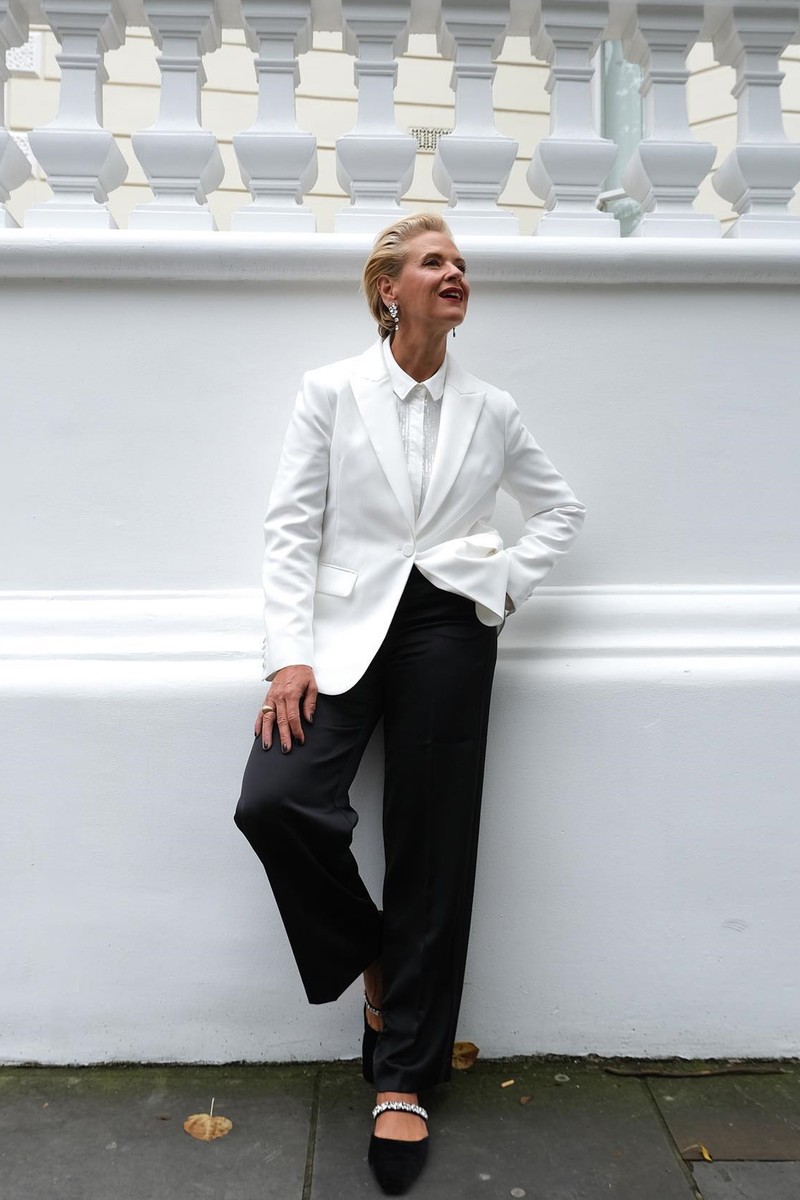
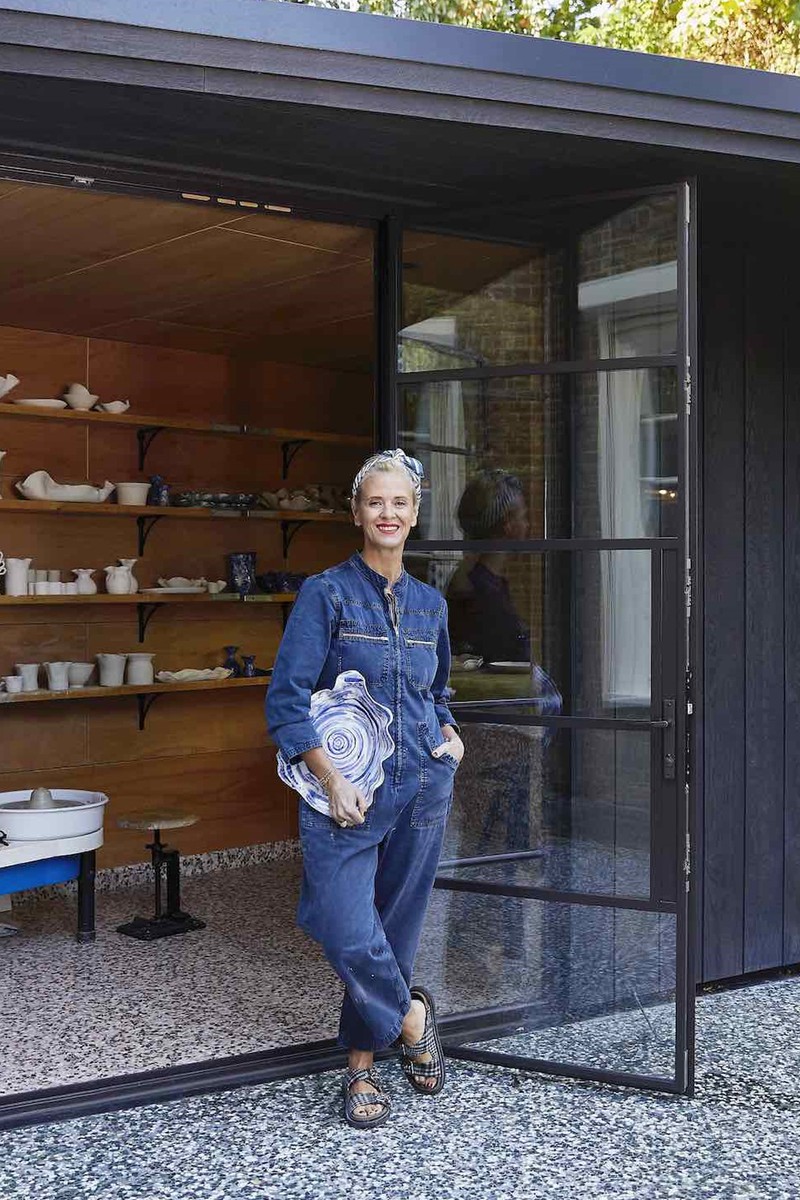
/https%3A%2F%2Fsheerluxe.com%2Fsites%2Fsheerluxe%2Ffiles%2Farticles%2F2024%2F05%2Fdeborah-brett-image-3.jpg?itok=SeGGHTTG)
